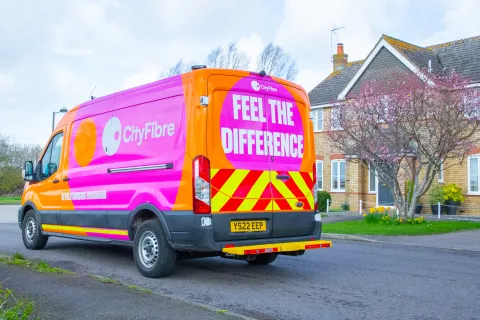Dark fibre and flexible-working strategy at the heart of Dundee Council’s £270m flagship waterfront development project.
Overview
As part of the £270m reinvigoration of Dundee, the ‘Dundee Waterfront’ vision is to transform, energise and connect the city to the waterfront.
Dundee Council’s ailing tower block headquarters stood in the way of the new waterfront development and therefore needed to be relocated closer to the city centre. The Council had two existing data centres, one of which would need to be moved to the new premises at Dundee House and linked back to the other.
Challenge
The Council required a fibre link between its new headquarters and the other existing data centre in Shore Terrace. It required a fully diverse solution providing separate routing, ducting and entry and exit points into each building. 12 fibre pairs would be installed in total, six on each route. The Council required a new, high bandwidth network that would allow for the implementation of flexible working and mobile working policies and provide additional channels for telephony services. Ultimately, this would allow any worker to log on to systems from any Council building.
“Heartbeat” between data centres
Ged Bell, head of IT at Dundee City Council explained: “All the Council’s services are provided from these two centres. All the 250 buildings across Dundee comprising of schools, transport links, social housing and environmental health, rely on these data centres and therefore a fast, reliable data and telephony link was critical.
“In effect, we were entrusting CityFibre with the development of the ‘heartbeat’ between the two data centres, the vital link that could not fail. It was essential that we had separate routes between them in order to provide the contingency and fallback should it be needed.”
Finding the right solution
A range of solutions were considered by the Council, including point to point wireless technology using antennae to transfer data and telephony, as well as more traditional offerings from some of the larger service providers in the marketplace. Bell continued: “We had our reservations about using wireless technology; it may have been more flexible and provided the cheaper long-term option, but it wouldn’t give us the capacity and the bandwidth we crucially required. “Similarly, other conventional carriers were discounted due to perceived issues with capacity but also resilience and cost.
Solution
CityFibre’s dark fibre solution provided the Council with the capacity requirements that they needed. With a previously installed small dark fibre metro ring in Dundee that had been running successfully for a couple of years, CityFibre had “proven experience and a track record with this type of emerging technology.” Bell elaborated, “CityFibre’s costing strategy and willingness to work with us were also big contributory factors in or decision to select them as a partner. “This was a flagship project for us; it was a vital part in the whole waterfront development. We didn’t anticipate another move for the Council’s HQ in the future, so laying fibre optic cables underground seemed the most sensible option. CityFibre was the only supplier who could do this for us - There was no-one else that could meet our needs in terms of the capacity and at a price we could afford.”
Results
CityFibre’s dark fibre solution meant that the Council has been able to achieve significant annual savings based on conventional carrier costs. Traditionally, the location of server-based services has always had an effect on the speed of data transfer to those services but, according to Bell, this is no longer an issue: “As a Council, we can do so much more now that both the location and network capacity barriers have been removed.” The new connection between data centres has also allowed the Council to significantly ramp up its hot-desking and home working initiatives throughout Council premises. Its IP telephony now has roaming capability, helping to enhance flexible working practices, resulting in further savings for taxpayers. The Council‘s new headquarters now accommodates over 600 desks for Council staff with a ratio of 10 staff for every eight desks. This has only been made workable due to the new network enabling hotdesking and home-working and allowing the Council to pass on savings made through investment in smaller premises. “Our new HQ would have needed to be 25% larger just to accommodate all the desks for our staff which would have significant and unnecessary cost implications for our taxpayers. “Now, network capacity just isn’t an issue. We are in a position to divest some of our assets, reduce our property portfolio, and make real costs savings that can be ploughed into other Council services. “As property and people are the biggest costs for any Council, having the flexibility to take a strategic approach to property means we have great opportunity to make measurable cost savings at a time when the economy needs it most.”
“As property and people are the biggest costs for any Council, having the flexibility to take a strategic approach to property means we have great opportunity to make measurable cost savings at a time when the economy needs it most.” Ged Bell, head of IT at Dundee City Council
Key Benefits • Highly reliable • Cost effective • Fast implementation • Greater control • Increased flexibility • Future-proof
Read the Dundee City Council case study
here


